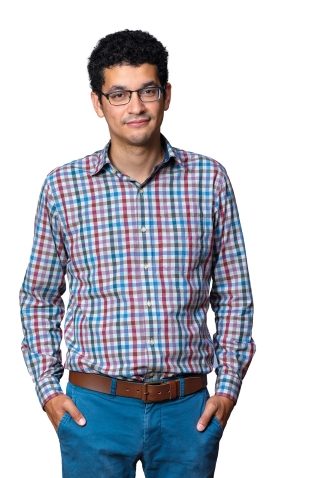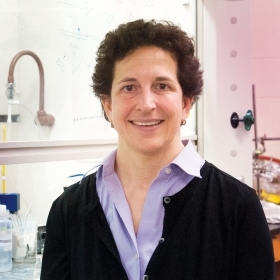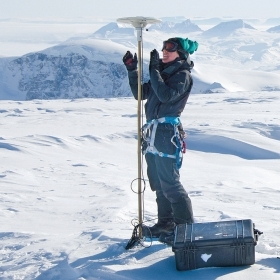Photo by Lisa Abitbol
When most of us come across a rock, we register little more than a gray hunk of stone that blends easily into the background. But Adrian Castro considers the rocks the main attraction. Every rock has a story to tell, he explains, and his job as a geologist is to use scientific techniques to unravel them. “Good geologists are like storytellers for the planet,” he says.
Growing up in the Bronx in New York City, Castro didn’t have any exposure to geology—and as a first-year at Amherst College, he planned on becoming another kind of storyteller: an English major. However, an overenrolled English class landed him in introductory geology, and it was love at first lecture.
Now an assistant professor of geosciences at Wellesley, Castro’s research focuses on two different processes: how mountains form when two tectonic plates on the Earth’s surface collide, and what happens in subduction, when one plate slides underneath another. To study these processes, he collects metamorphic rock samples and analyzes the minerals they contain. “I use the elements and the atoms in these minerals to understand the pressure and temperatures that rocks experienced at depth in our planet,” he says.
Learning how mountains form offers insight into how the planet has changed over time. “There’s been mountain building for hundreds of millions of years, but it hasn’t always looked the same,” Castro says, “and so part of this is trying to look to the past to understand the present.” For example, such research could shed light on active mountain building sites like the Himalayas or highlight the potential habitability of other planets. Subduction not only creates underwater volcanoes that cause earthquakes, but it also forms a connection between substances cycling in the atmosphere and the deep earth. Thus, studying the history and geochemistry of subduction “is actually a key piece of unraveling the long-term background cycling of important greenhouse gases and understanding climate change,” Castro says.
In conducting his research, Castro is also addressing two key questions: Where can geology be done? And, who can be a geologist? Castro considers himself “very much a New England geologist,” who prefers to study outcrops of rock in his own proverbial backyard. “You can find rocks with really cool stories … pretty much anywhere,” he says. For example, a single day of sampling has taken him from a Dunkin’ Donuts parking lot to a secluded riverbed to the top of a mountain.
Over the summer, Castro and his students worked on a project in the Nashoba terrain, near Littleton, Mass. Their goal was to piece together what happened 370 million years ago when the coast of North America collided with a chunk of North Africa, creating a mountain range that became part of the Pangea supercontinent. By collecting and analyzing rocks from the region, they determined that the rock came from deeper in the Earth—and thus moved to the surface more rapidly—than was previously thought.
Castro is also launching a project in the Bronx to study the very same rocks he walked over so many times growing up. The geologic history of New York City is understudied, he explains, having been largely pieced together based on correlations with rocks elsewhere in New England rather than actual samples from the city. “These rocks in New York City have a whole history to tell us—we just have to look for it,” he says.
Castro’s research team is composed of Wellesley students as well as high school students from the Bronx. “The second set of assumptions that we’re trying to challenge is, what is a typical geologist? Is it a flannel-wearing, beer-drinking white dude at an outcrop in the desert of Arizona? Or can it be anyone?” The first phase of the project will be carried out at the Bronx Zoo, where the team has already collected samples from inside the bear’s den—and will move into the lion’s den next. Ultimately, Castro hopes to expand the project to the entire city and create a K–12 field guide to teach students about the local geology.
Castro takes his role as a mentor and a teacher very seriously, crediting a series of caring educators with his own success. He recalls waiting for students to trickle into class on his first day at Wellesley, almost exactly 10 years after his introductory geology class at Amherst. “It was a very full-circle moment—it was kind of surreal,” he says, adding, “if I inspire a handful of people to become geologists, that’s great. But if I can inspire folks to think about the earth just a little bit differently, then that’s just as good.”







We ask that those who engage in Wellesley magazine's online community act with honesty, integrity, and respect. (Remember the honor code, alums?) We reserve the right to remove comments by impersonators or comments that are not civil and relevant to the subject at hand. By posting here, you are permitting Wellesley magazine to edit and republish your comment in all media. Please remember that all posts are public.